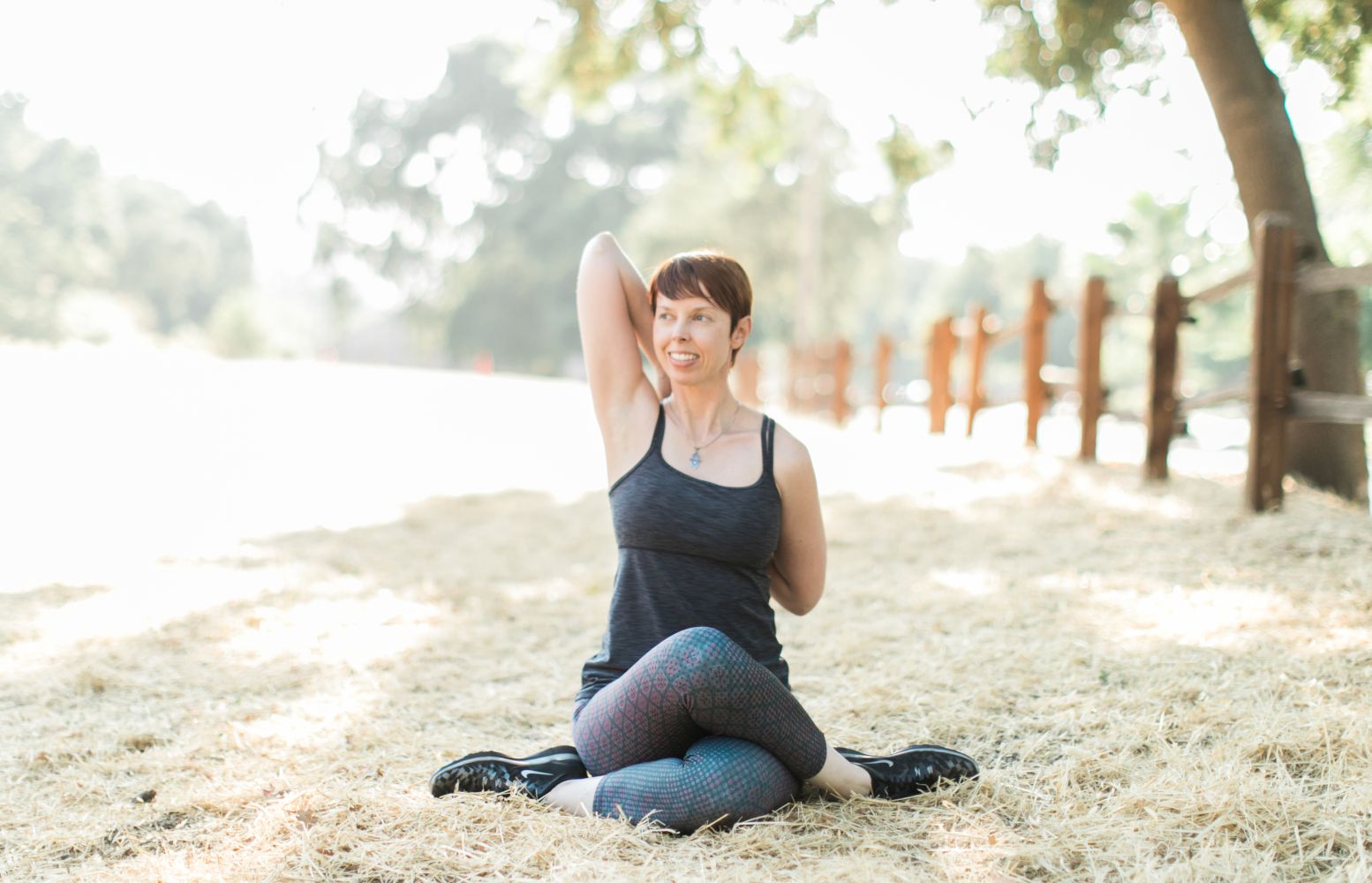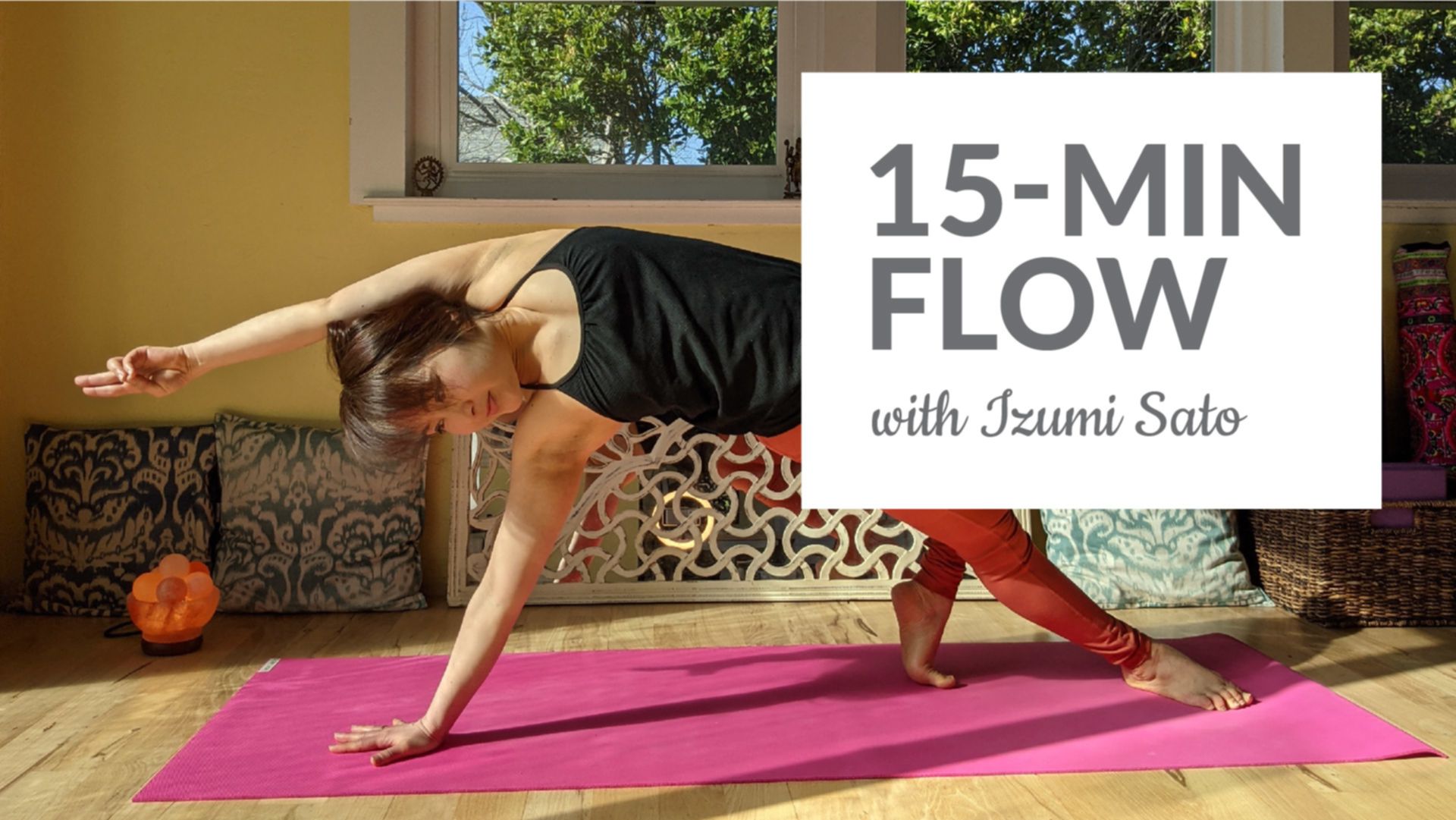Q: Please share your own wisdom of home/self-practice with us, since I find it very challenging for myself to keep a consistent self-practice, including the right nourishment and self-care.
A: In learning an art form, practice has one meaning; while in yoga and mind-body movement modalities, I find that practice means something a little different. Practice can be a means of improving upon learning. Or, through developing consistency, we hone our capacity to show up at a moment’s notice, such that what was once seemingly impossible becomes possible. I find that in yoga and mind-body practices, practice can also be a form of remembering. So, what are we trying to remember?
Many yoga practitioners abide by Patanjali’s eight limbs of yoga, which means that we practice getting out of our own way with ten ethical considerations, movement or asana (the bulk of what many people practice in the US), breath practices, turning our attention inward, concentrating, and entering into meditation. Most modern yoga practitioners also practice Hatha Yoga, which came centuries after Patanjali’s yoga. Hatha Yoga practitioners historically utilized their practice as a form of maintaining health, given that they were forest dwellers and there wasn’t a clinic down the road. They also practiced so that their bodies could become conduits for spiritual transcendence.
When looking at developing a daily practice, I think that it’s essential to ask: what do we deem essential to practice?
Turning within (which has been out of fashion for the last several hundred years of Western civilization) can be the ticket to greater connection to one’s intuition, referred to sometimes as the “still small voice within.” Yoga is often defined as “yoking.” When we’re yoked to the pulse of life, questions about our direction seem to answer themselves. If the world spent time every day “listening within,” we’d likely live in a very different world. One of my Tibetan teachers, Mingyur Rinpoche, suggests “small times, many times,” in reference to meditating two minutes, six times a day, so that the mind gets used to regularly observing itself. I like this idea because I view life as a practice, so setting up a day where small, formal meditation practices are placed throughout it, helps support deep listening.
Since each one of us is like a tiny ecosystem, the “right” nourishment and self-care is largely an “inside job,” in that it behooves each of us to learn to listen to our bodies. Fortunately, the eight limbs of yoga were designed for that.
Given your question, it sounds from here as though you want a mind-body practice every day to regularly nourish yourself and keep kindness towards yourself as a close companion throughout the day. If my assumption is correct, what daily practices might support these three objectives?
I’m practicing:
- staying healthy for a long period of time, to have as much time as possible to work on myself and make a difference where I can.
- meditating regularly to support being more present, as well as weed out outdated emotional and mental patterns.
- loving: those that are easy to love, those that aren’t (our greatest teachers), and myself.
Now, as a householder – a practitioner with modern responsibilities, including a family – I’ve found that if I get too fixated on the practice schedule, there will inevitably be frustration. Create a schedule, but also be prepared to adapt. Assume that there is always time for practice if we’re creative.

Morning
You may have a particular time of day that works better for your practices. I like to take care of a few of my practices first thing in the morning. If my golden retrievers don’t barge into the bedroom, I rise before the family. To begin the day with a sense of expansiveness and calm, I notice the way the breath feels in the body. Practice a five count on the inhale, six count on the pause at the top of the breath, six count on the exhale. I slow the breath and slowly expand it over ten minutes, so, ideally it feels as though my whole body is breathing before I’ve even set foot out of the bed. If I find blockages to an expansive breath, I meet them with curiosity. If I had a strong dream, I write it down. I ask the day what it wants from me and attempt to do more listening than inner talking, and, yes, often that is easier said than done. I repeat a Christian prayer that my dad gave me which focuses on making the most of this day. As a practitioner of a lineage that came from across several continents, it has become more important over the years to connect with my own family’s lineage as well.
- Body hygiene includes what most Americans do, plus tongue scraping, dry brushing, and massaging the body with an oil that works for my Ayurvedic type (I like coconut oil). While morning body practices may seem to take too much time, much can be accomplished in less than seven minutes. And, if I haven’t taken care of myself, how can I possibly care for others? This is knowledge that should have been passed down to all pregnant mothers. Entering the kitchen, I begin the day with a clean sink and counters. How do we support our space so we can be most effective? Be sure dogs and family have what they need for the day. Hug everyone goodbye. Yes, I practice that too, because that is part of the loving objective. It’s so easy to take the ones we love the most for granted.
- Connect to the earth. I boil water, add lemon with ginger and black pepper, and walk clockwise through the backyard to check in with each plant. We have recently added many plants and trees to our very downtown, urban property. It was our way of barely reconciling an enormous carbon footprint, largely from air and car travel. Every day, I attend in some way to these living creatures. Maharishi Mahesh’s phrase, “wherever we place our attention grows.” Well, you see that when you are attending to plants. You also see that time is relentless. Right now, there are pear blossoms, wisteria is bursting, and green kumquats are just forming. Tomorrow, the nectarines will burst out of nowhere.
- And then, time to meditate. I notice what thoughts and sometimes feelings have planted themselves in the form of discomfort or repetitive concerns. Like weeding, you’ve got to go inside with tender attention and feel around. Get intimate with that stuff you’d prefer not to take up residence in your inner space. Cultivate a witness that can listen. This is a form of intimacy. As a yoga practitioner, meditation is necessary, given that the eight limbs of yoga center around meditation, not to mention how much it takes to navigate the challenges of modern life with discernment and a sense of calm.
- Eat healthy, nourishing foods. As a teenager, I learned that if I ate poorly, I was an emotional wreck. Eating well is a form of self-love. Have a good breakfast. It sounds like nourishment is important for you, so perhaps make an appointment with an Ayurvedic practitioner, or make this part of your self-study.
- Practice discipline. The work we do each day can also be a form of practice. I care for all big-picture projects – writing, curriculum development, and long-term goals – before noon. From noon on, basic housekeeping is accomplished for the JOY school, Breathe Together Yoga, and retreats. Phone calls are reserved for the afternoon. Discipline is required to care for big-picture projects first, rather than getting sucked in by what can appear as the “crisis of the moment,” which is often, in retrospect, just more minutia.
- Create space. When we care for a space, as well as the people and animals that occupy it, we feel better, and so do they. I intersperse work and phone calls with cleaning and making the house an expression of the world I want to live in. Interspersing movement breaks up the tendency of sitting for long periods, and eyes being slowly basted by the computer screen. But, I’m home most of the day, and you, our readers, may work outside the house. Make your car a space to learn and connect. Arrive five minutes early to your job, and stay in the car for a short meditation. Creativity is key!
Now, to add to the complexity that is yoga, traditionally there are other yogas. The yoga of service, Karma Yoga, or the yoga of devotion, Bhakti, the yoga of meditation, Raja Yoga, or Jnana Yoga, the yoga of learning and self-inquiry. Do we attend to these yogas? We may be attending to them and not even realize it. Most Western yoga practitioners were not introduced to yoga through a specific lineage. You, who asked this question has children, as many of us do. After I was married, and particularly after my son was born, I had to adjust to responsibilities for the welfare of others. I set the intention, “There is always time to practice.” Can I be fully here for this breath right now? See? We’re practicing. I look at being a parent as a form of the yogas of action and devotion. Had a female yogi written the first yogic texts, she might have said that if we take care of the world and the people around us, this is yoga. When a tree branch falls in the forest and no one is there to hear it, did it fall? When a parent is parenting but doesn’t realize that they are practicing a form Bhakti and Karma Yoga, are they practicing yoga?

Afternoon
The afternoon becomes taking our progeny to wherever he’s supposed to go next, a lesson or rehearsal. This is dedicated time for practice, where I can observe how present and spacious I’m able to be with this teenage human being who came from my body, but is not me. Our children grow so quickly and a practice as a parent is to meet the moment as it is and meet them truly where they are now, not in our concept of where they were three years ago. Parenting is a constant practice of present moment awareness and unconditional love. In my book, parenthood is a mindfulness practice.
While it’s stated in some texts that morning is the best time for asana, I often prefer asana in the late afternoon or early evening to “unwind the day,” to unwind accumulated tension. Because the practice is also about cleansing, and because science shows that repetitive movement isn’t the best for a body that has orbited around the sun for a while, every day, at different times throughout, we need different types of movement. And, despite the current trend to eliminate inversions (like shoulder and headstand), there are ways to safely turn the body upside down every day, and I do. Being conscious of breath, sensation, and sound as we move into a new shape is how we embody awareness.

Night
Time with family at night is time to practice intimacy. Before bed, self-reflection (or Jnana Yoga): Where in the day did I maintain a sense of center, and where did it go out the window? Last January, I began writing in a gratitude journal each night. Tibetan Buddhist teacher, Mingyur Rinpoche also advised to keep a small cup beside the bed. When the light goes off, I turn the cup over. There is nothing more to be done today, so it’s time to make a tiny vow to release the day from thought. This is the ticket to a good night’s sleep. Upon rising, I turn the cup back over, and like Meditation Teacher Sharon Salzberg says, “Begin again.”
Consistent daily practice anchors what we care about most into daily living. When we don’t practice, we give an untrained mind more freedom to roam about. When we meet our resistance and show up anyway, this is a form of self-empowerment.
Play with your practice. Some practices can be tried for a season, particularly body and food practices. Some practices can be taken on for a year or thirty. What is worth remembering, though, is that
The practice is not the way. A practice is a vehicle. It will take you there.
There are so many practices over so many centuries. If we suffer from “never enough” syndrome, it may feel as though we’re not able to practice as much as we’d like. For mind and body practitioners, returning ourselves to this moment can be done anywhere, any time. We’re here. That’s the practice.
I know that I’ve outgrown a practice when what I’ve been working on becomes naturally integrated into daily life, and I no longer need to remind myself. Choose a practice and stick with it for a while so that it can integrate into your life. Get to know it deeply. When you encounter resistance, it is often said that is when the true practice begins.
So, what do you care about cultivating? Pick one to three things. Create a daily practice for each. Work around obligations. Be creative with your approach. Forgive yourself often for the days that get away from you, and simply, begin again.

















One reply on “Ask Me Anything: Jennifer Prugh Responds to Students’ Questions”
Love this. Thank you for sharing.